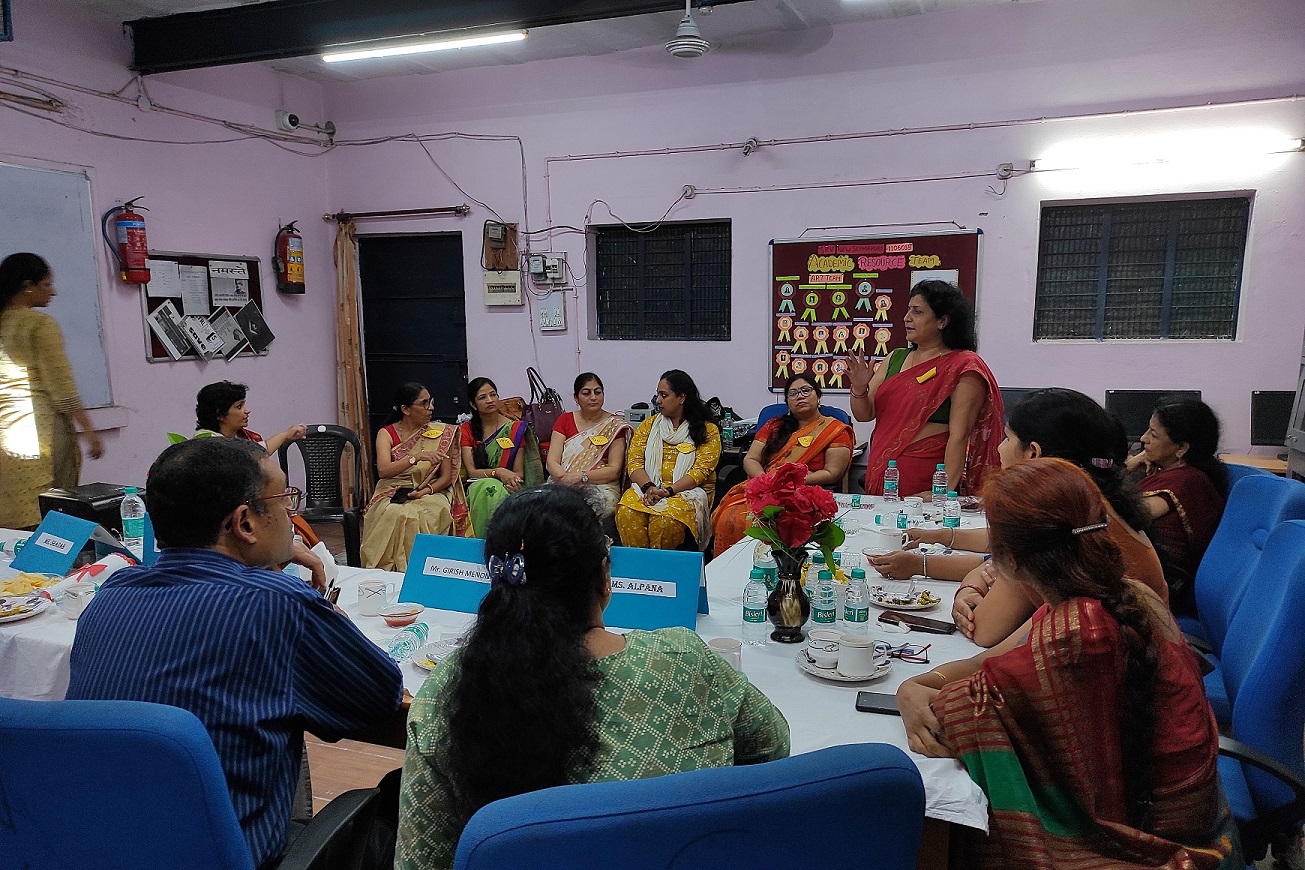Centre for Intrinsic Motivation

SKV Seemapuri, a school in North East Delhi, was slightly hesitant to embrace the Teacher Development Coordinator (TDC) program. There was low exposure to the program and the teachers hardly had any time for additional assignments. The situation was further exacerbated by limited infrastructure and space constraints. However, when the TDC program established a strong peer network among teachers, a gradual shift could be seen from ‘How is this possible?’ to ‘Yes, it is possible’ in them. The TDC programme exposed teachers to boost classroom learning through innovative modes of engagement such as think-pair-share, reflective diaries and exit ticket strategy.
This case study shows how the TDC programme, facilitated by STiR, has the potential to motivate teachers to approach challenges with a growth mindset. The network meeting facilitated by the TDC in this school had a humble beginning with a tennis board for a projector screen.
Through the experience of a teacher, Ms. Ekta we see how strategies to foster classroom improvements discussed in network meetings helped to create an inclusive environment for students of different learning levels. This collaboration, saw a two-way shift in the students between 2019-2022:
As a teacher of secondary classes, Ms Ekta often faced issues with students who did not pay attention. The network meetings along with the peer discussions, helped her discover the concept of interactive lessons. While talking about her experience, she shared “When I implemented these new teaching practices, children found it interesting. Previously, they tried to learn maths formulas without understanding the concept but now they try to understand first.” She explained the process she adopted to implement the concept of interactive lessons-
This breakthrough could be achieved through network meetings which not only instil new ideas but are backed with action planning, feedback and reflection, a 360 degree teaching and learning approach. From a traditional learning setup, Ms. Ekta was able to slowly guide her classroom into becoming fear-free through behavioural, teaching and application methods.. This helped her students become confident and participate in classroom discussions, freely. “Generally, teachers expect for the children to sit silently while they speak. But my class is noisy and breaks beyond the traditional definition of a classroom”, she said with a smile.
The positive consequences of the changes Ms. Ekta introduced led to:
She said, “Asking questions helps me understand how the students think, how much they have understood and then assess learning gaps.” I probe the children on each step and encourage them to reflect on mistakes and think harder on the “Why” of each step. This is very important to shift their mindset from rote learning to comprehension.”
Ms Ekta shared, every time she used an innovative teaching method, children responded to her positively. This increased her self esteem as a teacher. Ms.Ekta observed that there has been an increase in 20-30% scores of each child in her class. She said, “On average, children are showing improvements and have developed basic understanding in maths. More children are scoring passing marks. When I tell them about their gradual progress, they feel more confident. There is a shift from “I can’t do it”, to “Yes I can do it, yes I can learn!” She expressed “ I am happy to see that in my class, students feel motivated and happy.”